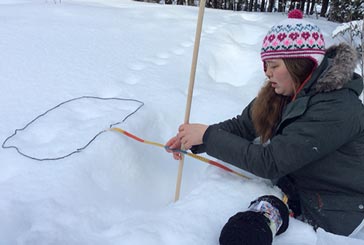Measuring Imprints Outside
Early Years (Age 3 – 6)
Curriculum Goal
Kindergarten: Demonstrating Literacy and Mathematics Behaviour
- Retell experiences, events, and familiar stories in proper sequence (e.g., orally; in new and creative ways; using drama, visual arts, non-verbal communication, and representations; in a conversation) (1.10)
- Select an attribute to measure (e.g., capacity), determine an appropriate non-standard unit of measure, and measure and compare two or more objects (16.1)
- Investigate strategies and materials used when measuring with non-standard units of measure (16.2)
Kindergarten: Belonging and Contributing
- Develop an awareness of the ways in which people adapt to the places in which they live (28.3)
- Identify similarities and differences between local environments (29.1)
- Describe what would happen if something in the local environment changes (e.g., if trees in a park were cut down, if the pond dried up) (29.2)
Context
- Introduce the idea of imprints around us — in the snow, sand, grass, or mud.
- The educator should point out that impressions are human or animal footprints on the grounds surface.
Materials
- Imprint to measure (human or animal) \
- Yarn
- Unifix cubes
- Measuring tapes
Lesson
Introduction:
- Have a full-class discussion about human and animal imprints
- What do the students know about imprints?
- What can imprints look like?
- Where do you see animal imprints? Where do you see human imprints?
- What type of animal imprints have you seen?
- Take the class outside to search for imprints in the snow, sand, or mud.
- Once an imprint has been found:
- Talk about the shape of the imprint
- Discuss if students think it is a human or animal imprint.
- What animal do students think made that shape in the ground?
- Draw students’ attention to the direction of the imprint.
- Ask which direction they believe the imprint is going. How are they making this determination?
- Guide students to measure the imprint using yarn, unifix cubes, or measuring tapes.
- Have students observe and record the shape, size, depth, and width of each imprint.

Look Fors
- What prior knowledge are students bringing to the class discussion that can aid in our understanding of imprints?
- Are students able to measure accurately (e.g., measure the entire length or circumference of the imprint)?
- Do students see a correlation between the size of an imprint and the animal or human that created it?
Share this lesson
Share on facebook
Share on twitter
Share on email
